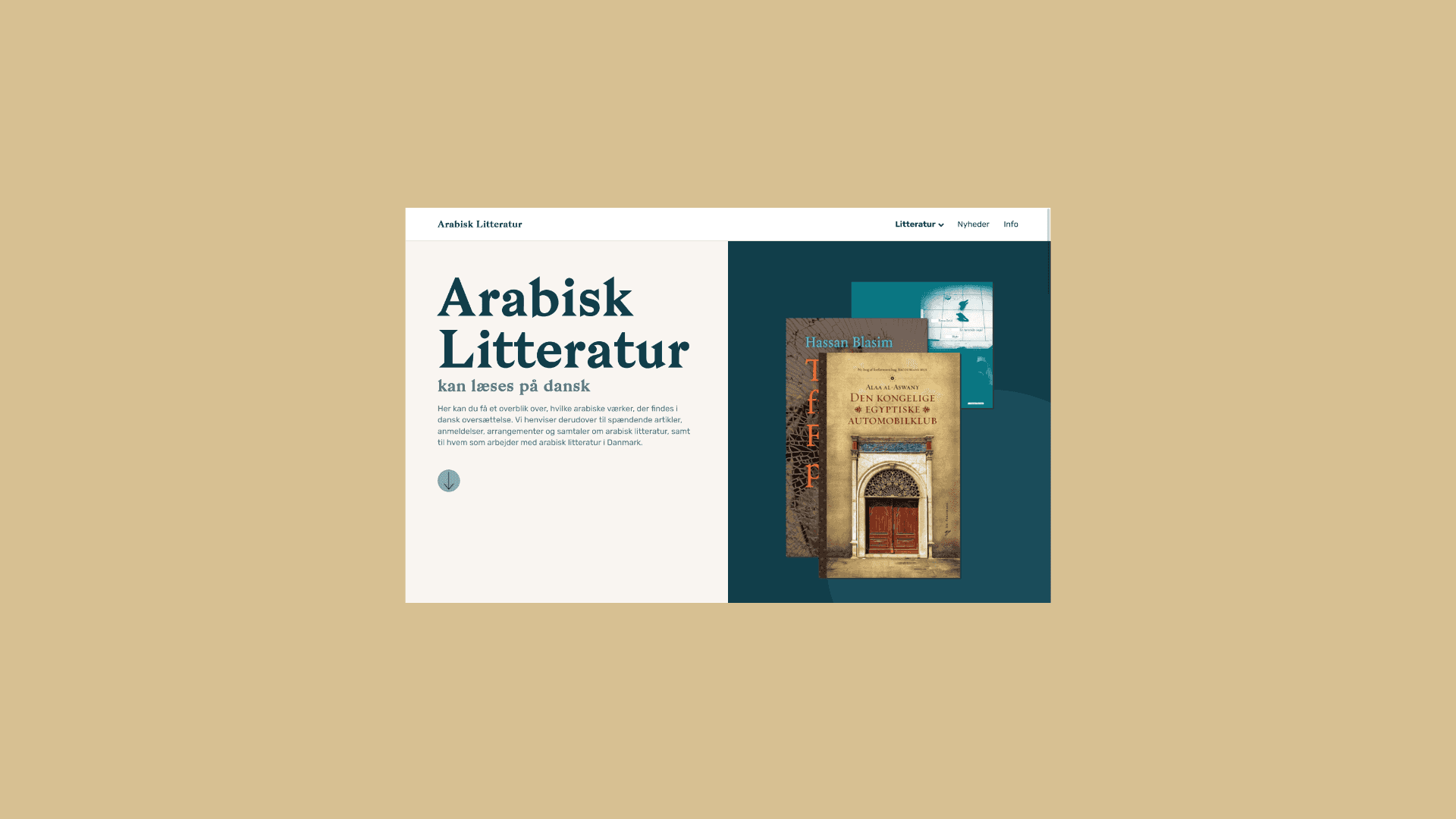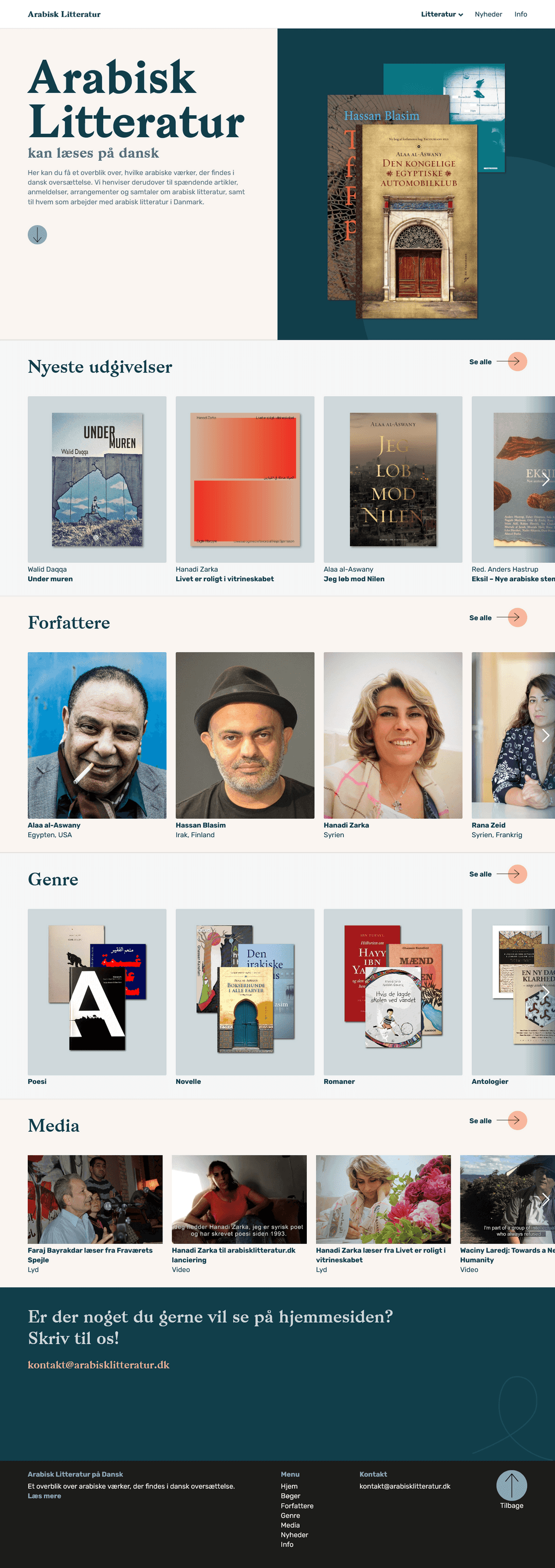
Arabisk Litteratur
OVERVIEW
I was commisioned to design and develop a website that can highlight some of the best work in literature that has been written in arabic and translated to danish.
OUTPUT
Website
ROLE
UI/UX design, front-end development
YEAR
2021
CLIENT
Arabisk Litteratur på Dansk
TOOLS
Adobe XD, Wordpress
The project
Naja Bjørnsson is a PhD student focusing on Syrian literature. She approached me to design and develop an online platform meant as an index of arabic literature translated to danish, as part of the project "Arabisk Litteratur kan læses på dansk".
Process
The project started with a small-scale UX research report - interviews with two people. One who is a literature enthusiast, one who is an expert in arabic culture. Both of them emphasised the importance of highlighting certain books, but also media relating to the writers and arabic culture as an important part of the website. I did thorough research into other book-based websites, looking at library websites, publishers, and online bookshops.
What would be needed: an index page with an overview of all the content, a page for each of the sections, and a page per book and author.
A prototype of the website was made an tested with my friend and client, as well as my original interviewees, to make sure that the information architecture made sense.
My client, who would primarily work with uploading content was content and familiar with using Wordpress, therefore it would be the best CMS in this case.
Conclusion
The finished product is a website that highlights arabic literature translated to danish, but also includes news and events related to arabic culture in Denmark.
A few changes were made throughout the process. Making a website dedicated to another culture can sometimes open up questions about perspective. The product should not reflect a “they and us” type of portrayal. One of the initial ideas was to use a map of the arabic world to navigate to books and writers. This turned opened a lot of questions about residence, origin and perspective since a lot of the writers resides in non-arabic countries.




